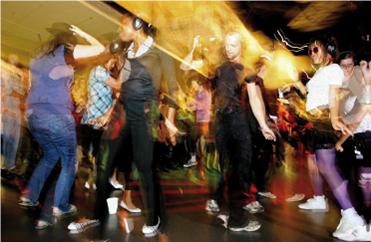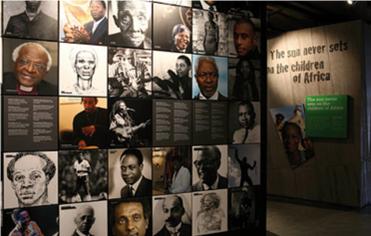Knowing who your visitors are, what their motivation is for visiting, the details of their actual spending behaviours, their propensity to return and their experience satisfaction are insights which are as crucial to Westfield shopping centre and Waitrose as museums and galleries.
ALVA’s 56 members manage over 2,000 sites across the UK and host more than 100 million visits by domestic and overseas visitors every year, over 25% of all visits made annually in the UK. Our members – from the National Trust to Warner Bros, Titanic Belfast to London Zoo, the Museum of Scotland to Chatsworth – know that they are not fundamentally in competition with each other for the leisure hour and the leisure pound. Their real competitors are IKEA, the out-of-town shopping centre, B&Q and X-Box. Given that, they need to understand with absolute precision who their visitors are and what they want from their visitor experience in order to build business plans and continual improvement strategies which ensure that visitors go away happy but, as importantly, come back again too.
The insights and trends which our members share at our meetings and through our visitor experience benchmarking service, run for us by BDRC Continental, are fascinating and are incredibly useful tools, not just for the individual attractions but also for our lobbying work. The ability to know absolutely what Chinese visitors like, what they spend, the average spend per head in attractions and their preferred method of payment, for example, has been of huge value in our meetings with the Home Office and the UK Border Agency on improving the visa application process for prospective Chinese visitors to the UK.
Our visitor experience benchmarking also helpfully reveals where visitors find out about attractions, where recommendations come from and what they are seeking from the visit: the opportunity to explore an issue or subject in greater depth; to learn; to be in an attractive place with a nice ambience; to entertain children or even big kids (adults); to simply fill a few hours indoors in an entertaining place. Such insights produce a critically honest appreciation of real motivations for visits and can, occasionally, challenge precious notions of how compelling our attractions are. One of our members’ TripAdvisor reviews bears this out; the most frequently made comment as to why their attraction is so liked is because they allow dogs in the house. No mention of the Gainsboroughs, the dramatic interpretation or the locally procured food.

HOME COMFORTS
Collectively, our members’ data illuminates trends and behaviours which are also reflected in larger national studies, conducted by VisitEngland for example. Right at the start of the recession we saw daily evidence of the ‘staycation’ effect and a shift in visitor numbers attending heritage properties. Our own research has shown that during times of austerity and economic challenge, UK residents feel that the future is uncertain, unpredictable, scary even. The past, in contrast, is definite, certain, safe and reassuring. The compelling attraction of nostalgia has long been recognised by supermarkets and high street retailers, where returns to simple home-cooked meals, favourite dishes from childhood, simpler high street fashions and even lengths of hems (allegedly) have a correlation with economic cycles. TV producers know this too; look at ‘Who do you think you are?’, ‘Downton Abbey’, ‘Call the Midwife’ – even ‘Great British Bake Off’. The reassurance of the past; a longing, at a time of uncertainly and change, to know where we come from, who we are, allows us to be more confident about where we might be going.

The fact that 73% of all British adults went to a heritage property or site in 2013 and 30% went to more than three or four (DCMS ‘Taking Part’ Survey, December 2013) is borne out by our own data. We have seen visitor numbers grow steadily at heritage properties: in the last three years we have seen the heritage sector exceeding the leisure sector for total visitor spend per head in admission sales, retail and catering; whereas museums and galleries have seen strong admission growth but a fall in discretionary spend. Across all of the ALVA membership, we have seen an average of 4% growth in visitor numbers per annum since 2003, with fastest growth amongst free, city-based museums and galleries.
GETTING RESULTS
The daily collection of this data was vital during the London Olympics in July and August of 2012. On the day prior to the Olympic opening ceremony I began receiving phone calls and emails from London members saying the same thing – their visitors numbers were falling off a cliff. The much anticipated Olympic displacement effect was happening with a vengeance, but whereas the overseas visitors were indeed staying away for the duration and Games as we anticipated (but were in the UK in bigger numbers at the beginning and end of the year), it was Brits – and specifically Londoners – who were staying out of the capital. The data London attractions provided on a daily basis – visitor numbers, admission sales, visitor spend per head etc – was stark, depressing but vital for our lobbying work. Some of our most iconic and popular museums, galleries, leisure sites and other attractions were experiencing 50%, 60% and nearly 65% decreases in visitor numbers compared to the same week in the previous year. This was the data, rather than the tabloid photos of deserted London streets, which we used to convince London Mayor Boris Johnson to instruct Transport for London to change their rather off- putting travel advisory messages to Londoners and to positively welcome Londoners back to their own city. Within 24 hours, visitor numbers to London attractions began to rise.
Data is vital for evidence- based lobbying, the construction of insight-rich business plans, the changing of organisational cultures to become more visitor-focussed and, crucially, as we have found in ALVA, to justify the need to ensure that continual improvement in managing and delivering a great visitor experience becomes a norm and not an occasional pursuit.
Back to top





